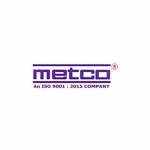Bridges are the lifelines of our transportation networks—quietly bearing the weight of vehicles, resisting the elements, and adapting to structural changes beneath their surfaces. Among the vital yet often overlooked components of a bridge is the expansion joint—a device that absorbs movements caused by temperature fluctuations, traffic loads, seismic activity, and more. As infrastructure challenges grow and design expectations rise, the evolution of bridge expansion-joint technology has become critical. In this article, we’ll explore how Bridge Expansion Joint technology has developed over time—moving from simple gap designs to modular, sensor-equipped systems—and consider what that means for the durability, safety, and usability of bridges.
Early Designs – Simple Gaps & Strip Seals
In the early days of bridge design, Bridge Expansion Joint were often little more than simple gaps cut into the structure to allow for thermal expansion and contraction. These gaps sometimes included filler materials or strip seals to close out water and debris, but the movement capacity and durability were limited. According to early research, these simpler joints could suffer from water ingress, corrosion, fatigue, and vehicle-comfort issues.
One widely used type was the open joint that relies on a gap only, offering cost-effectiveness but relatively poor protection against moisture and debris. The limitations were clear: maintenance requirements were high, vehicle noise and vibration could be problematic, and the lifespan of the joints was often short relative to the bridge’s designed lifespan. The need for better design solutions became evident.
Mid-Era Innovation – Sealed Joints & Modular Solutions
As bridge spans grew longer, traffic loads increased, and demands for longevity and low maintenance rose, expansion joint technology progressed. Engineers introduced sealed joints (with elastomeric seals, rubber profiles, or strip seals) to reduce the ingress of water, salt, and debris. Another key advancement was the modular expansion joint. These devices consist of multiple gaps arranged in series, embedded in structural steel or other frames, capable of accommodating larger movements and offering improved vehicle comfort. For example:
Contemporary & Emerging Technologies – Smart Materials, IoT Integration, Durability Focus
Today, the evolution has moved into a new realm: smart materials, real-time monitoring, and systems designed for longevity in more demanding environments. A 2025 article highlights the integration of fibre-reinforced polymers (FRP), high-strength steel alloys, and embedded sensors in expansion‐joint design.
Key modern developments include:
High-performance materials: Use of corrosion-resistant alloys, FRP, and polymer composites to resist harsh environments, salt, and traffic wear.
Sensor integration / IoT: Accelerometers, strain gauges, LoRaWAN data transmission to monitor joint movement, wear patterns, and enable predictive maintenance.
Modular multi-gap joints for large movement accommodation (e.g., over 3000 mm displacement) and multi-axis rotation.
Sustainability and low-maintenance trends: The market research shows a shift toward joints that require fewer interventions, use recyclable or low-impact materials, and support longer service lives (targeting 50+ years) rather than short-term fixes.
Why It Matters – Benefits & Considerations
The evolution of Expansion Joint technology matters for several reasons:
Safety: Properly functioning joints allow the bridge to move as needed without transferring damaging stresses, which can lead to cracking, joint failure or even structural issues.
Durability & maintenance cost: Advanced materials and monitoring reduce downtime, reduce the frequency of interventions, and extend lifespan, saving money over the bridge’s life.
Traffic comfort and usability: Less noise, smoother travel over expansion joints improves driver/vehicle wear and experience.
Adaptation to extreme conditions: In regions of high temperature variation, heavy traffic, or seismic risk, joints must accommodate greater movement — modern designs are better suited.
Sustainability: Longer-lasting joints reduce waste, reduce the need for frequent replacements, and support infrastructure resilience.
Conclusion
From simple gaps and strip seals to modular multi-gap assemblies, high-performance materials and smart sensor integration, the technology of Bridge Expansion Joint has come a long way. Modern infrastructure demands joints that not only accommodate movement but also provide durability, low maintenance, and enhanced structural health intelligence. As our transportation network evolves and ages, investing in advanced expansion joint technology becomes a key part of efficient infrastructure management.
For best-in-class solutions in bridge expansion joint design and manufacture, consider the expertise available at METCO — where innovation and durability combine to deliver future-ready infrastructure components.


Write a comment ...